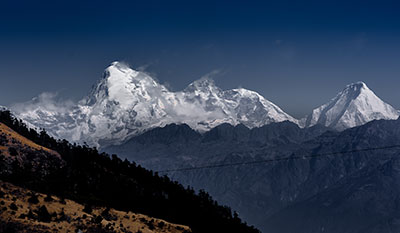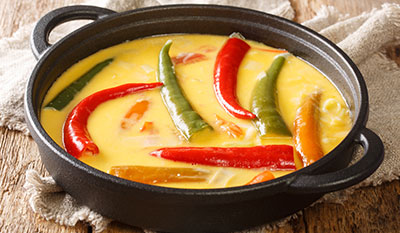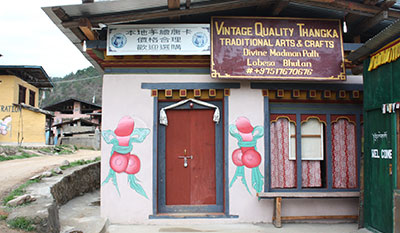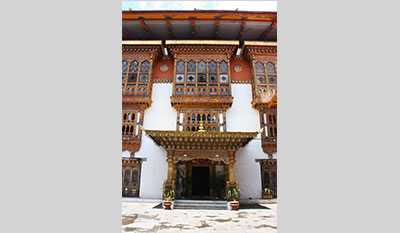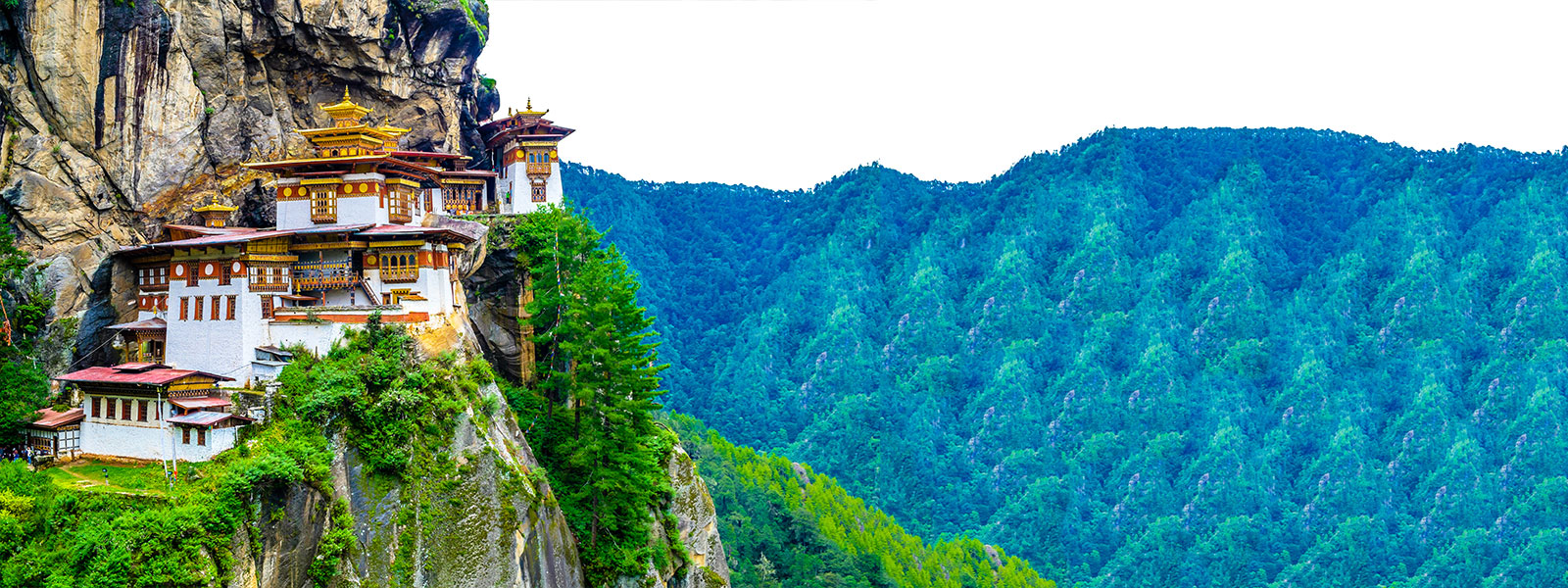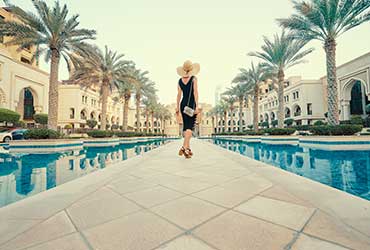In the Land of Happiness
Whether you are travelling solo or in a group, the Land of the Thunder Dragon consciously encourages sustainable tourism and offers unparalleled experiences.
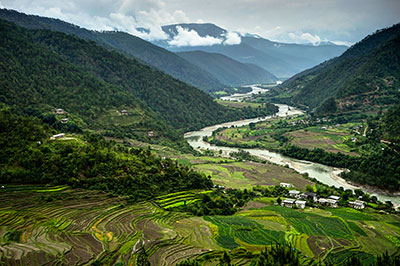 It is no mystery why people from all across the globe are drawn to Bhutan, often seeking the much-needed respite from their jaded urban settings and encumbrances of existence. The East Himalayan kingdom, nestled between China and India, stands out as a rarity in a world obsessed with the material and power. Instead, it is the only country in the world that places Gross National Happiness (GNH) above its Gross Domestic Product (GDP).
It is no mystery why people from all across the globe are drawn to Bhutan, often seeking the much-needed respite from their jaded urban settings and encumbrances of existence. The East Himalayan kingdom, nestled between China and India, stands out as a rarity in a world obsessed with the material and power. Instead, it is the only country in the world that places Gross National Happiness (GNH) above its Gross Domestic Product (GDP).
This process of ensuring the wholesome well-being of its people by measuring GNH began when Bhutan opened up to globalisation in the mid-1970s. Almost half a century later, it still continues to prioritise policies on equality, health, gender equity, ecology, and community as a part of its GNH ideology.
The tiny country has always charged a Sustainable Development Fee (SDF) on all foreign tourists for conserving its cultural and natural heritage as well as promoting responsible tourism. Being one of the extremely few carbon-negative countries it does require funds. Last September, though, when it opened its doors to tourism after almost two and a half years of border closures, it announced a new $200 impost on tourists for the privilege of enjoying stunning scenery and fresh mountain air.
Travel enthusiasts are not deterred. And, if you too want to explore this unique nation, here are a few places that you must feature on your itinerary:
Thimphu
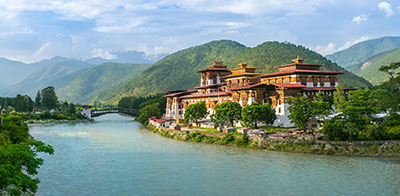 A blend of tradition and modernity, Thimphu has many tourist attractions like the National Memorial Chorten, also known as Thimphu Chorten, and the majestic Simtokha Dzong, meaning ‘temple fortress’. The Folk Heritage Museum located in the heart of the city is another popular tourist destination that exhibits rural Bhutanese life and so is the Bhutan Post Office Headquarters, reminiscent of simpler times. It has beautiful stamps for sale and you can get your very own souvenir stamp printed too, something a lot of selfie-lovers will not be able to resist. If spiritual bliss is what you seek, then explore the Dechen Phodrang, Cheri, and Tango monasteries nearby.
A blend of tradition and modernity, Thimphu has many tourist attractions like the National Memorial Chorten, also known as Thimphu Chorten, and the majestic Simtokha Dzong, meaning ‘temple fortress’. The Folk Heritage Museum located in the heart of the city is another popular tourist destination that exhibits rural Bhutanese life and so is the Bhutan Post Office Headquarters, reminiscent of simpler times. It has beautiful stamps for sale and you can get your very own souvenir stamp printed too, something a lot of selfie-lovers will not be able to resist. If spiritual bliss is what you seek, then explore the Dechen Phodrang, Cheri, and Tango monasteries nearby.
Punakha
 The erstwhile capital of Bhutan (till 1955), this picturesque city is nestled between the two most prominent rivers, Mo Chu and Pho, which make this region extremely fertile and ideal for production of rice. Drive through the Dochula Pass on your way to or from Punakha for ethereal views of cloud covered mountains. The Punakha Dzong has immense historical significance as it is one of the oldest and largest in the country and it houses various sacred relics of the Kagyu School of Tibetan Buddhism. It is truly a delight for photographers, with its ornate buildings and prayer halls and situated as it is on the confluence of the two rivers.
The erstwhile capital of Bhutan (till 1955), this picturesque city is nestled between the two most prominent rivers, Mo Chu and Pho, which make this region extremely fertile and ideal for production of rice. Drive through the Dochula Pass on your way to or from Punakha for ethereal views of cloud covered mountains. The Punakha Dzong has immense historical significance as it is one of the oldest and largest in the country and it houses various sacred relics of the Kagyu School of Tibetan Buddhism. It is truly a delight for photographers, with its ornate buildings and prayer halls and situated as it is on the confluence of the two rivers.
And just around 13km from here is the famous Fertility Temple of Bhutan, Chimi Lhakhang. Dedicated to Lama Drukpa Kuenly, its fascinating mythological significance is the reason why the human phallic symbol is considered to be sacred by the Bhutanese. In vibrant colours and designs, in the form of paintings or wooden sculptures, you commonly find it adorning homes and other spaces as a good omen and for protection.
Paro
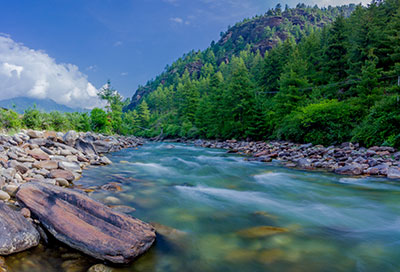 Bhutan’s only international airport is situated here and so is the world-renowned Paro Takstang or Tiger’s Nest Monastery. Visited by pilgrims from the world over as it is a revered Vajrayana Himalayan Buddhist site, this iconic structure was constructed in 1692 on the steep cliffside overlooking Paro valley, around the cave where Guru Rinpoche (also referred to as Padmasambhava) first meditated. Being the enlightened one he introduced Buddhism to Bhutan and according to legend, he was carried here from Tibet by a tigress on her back. Even though the nearly three-kilometre hike to the monastery is tedious, its splendid temples and the exceptional views you get from there are surely worth the effort.
Bhutan’s only international airport is situated here and so is the world-renowned Paro Takstang or Tiger’s Nest Monastery. Visited by pilgrims from the world over as it is a revered Vajrayana Himalayan Buddhist site, this iconic structure was constructed in 1692 on the steep cliffside overlooking Paro valley, around the cave where Guru Rinpoche (also referred to as Padmasambhava) first meditated. Being the enlightened one he introduced Buddhism to Bhutan and according to legend, he was carried here from Tibet by a tigress on her back. Even though the nearly three-kilometre hike to the monastery is tedious, its splendid temples and the exceptional views you get from there are surely worth the effort.
Not many are aware that Bhutan produces it very own vodka. A sublime blend of the finest organic wheat grains and natural spring water from its pristine mountains, Raven Vodka is triple distilled to ensure highest quality. But if you are a beer lover then head to the Namgay Artisanal Brewery in Paro and sample their flavourful range consisting of ales, cider, and more. Quintessentially local and a must-try is the one made from the staple cereal of Bhutan – Red Rice Lager.
No visit to Bhutan can be complete without trying its delectable cuisine, that comprises of different types of rice, cheese, vegetables, and meats. And if you want to strictly be with nature, then try out the various treks across the country like Bumthang, Chele La, Laya, Sakteng Wildlife Sanctuary, et al. Be mindful of factors like the season and difficulty level of the treks when deciding. So, what are you waiting for? Head to Bhutan to make the mind, body, and soul happy. Also do your bit to support sustainable tourism.
